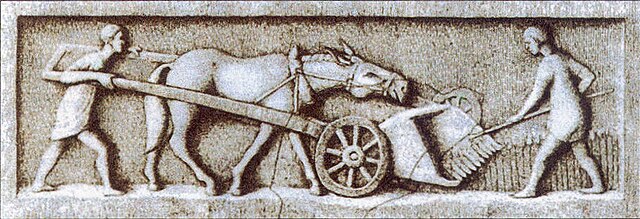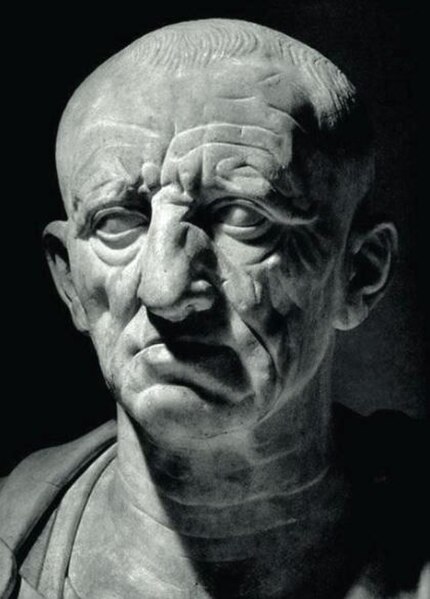Agriculture in ancient Rome
Roman agriculture describes the farming practices of ancient Rome, during a period of over 1000 years. From humble beginnings, the Roman Republic and the Roman Empire expanded to rule much of Europe, northern Africa, and the Middle East and thus comprised many agricultural environments of which the Mediterranean climate of dry, hot summers and cool, rainy winter was the most common. Within the Mediterranean area, a triad of crops were most important: grains, olives, and grapes.
Roman hoe blade, from the Field Museum in Chicago
Arles aqueduct at the Barbegal mills
Part-reconstructed mills below rock-cut channel, Barbegal
Gallo-Roman harvesting machine
Marcus Porcius Cato, also known as Cato the Censor, the Elder and the Wise, was a Roman soldier, senator, and historian known for his conservatism and opposition to Hellenization. He was the first to write history in Latin with his Origines, a now fragmentary work on the history of Rome. His work De agri cultura, a rambling work on agriculture, farming, rituals, and recipes, is the oldest extant prose written in the Latin language. His epithet "Elder" distinguishes him from his great-grandson Cato the Younger, who opposed Julius Caesar.
The Patrician Torlonia bust thought to be of Cato the Elder
The theatre at Tusculum
Hannibal and his men crossing the Alps
Part of the Roman Forum. The arch was erected by Septimius Severus.








